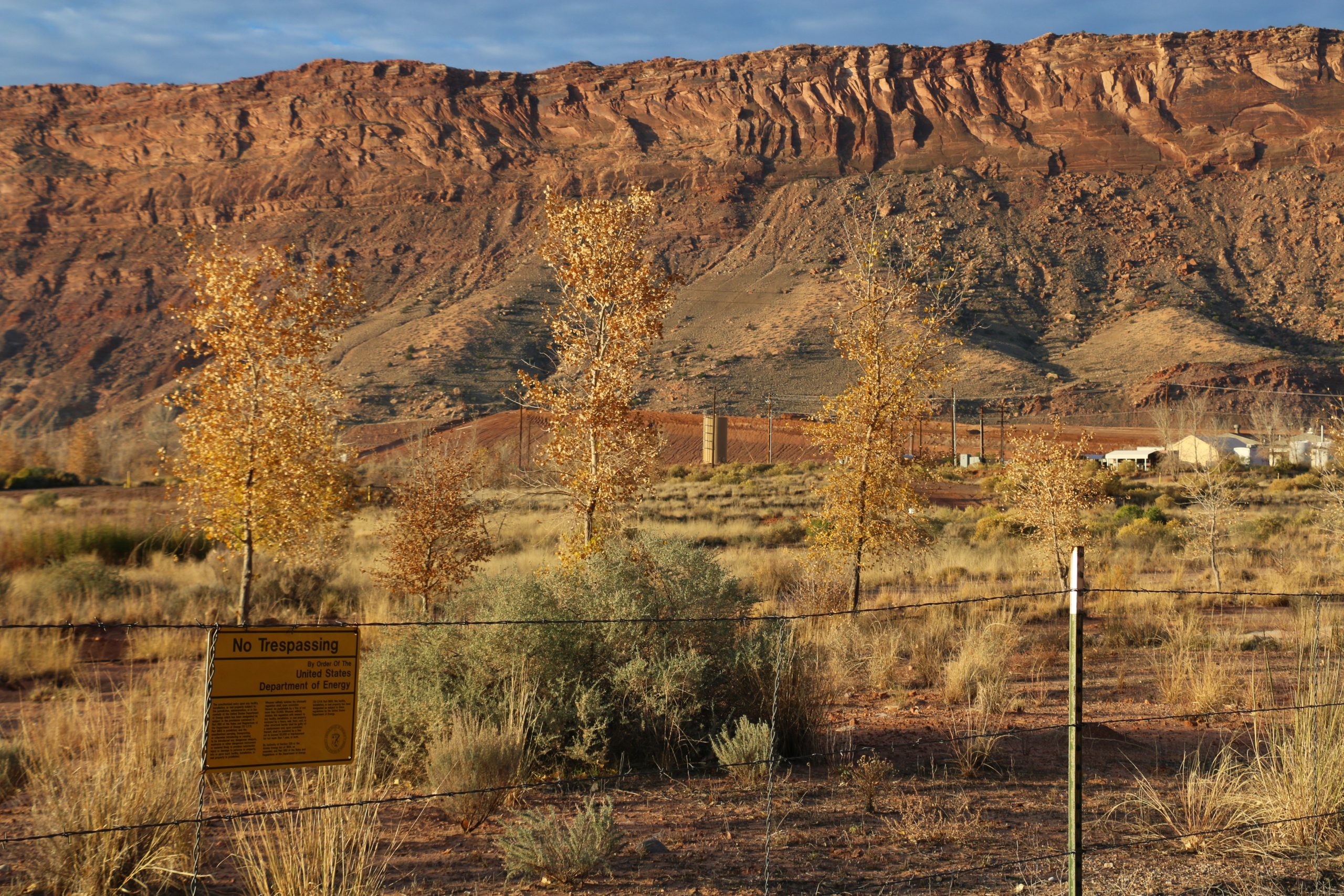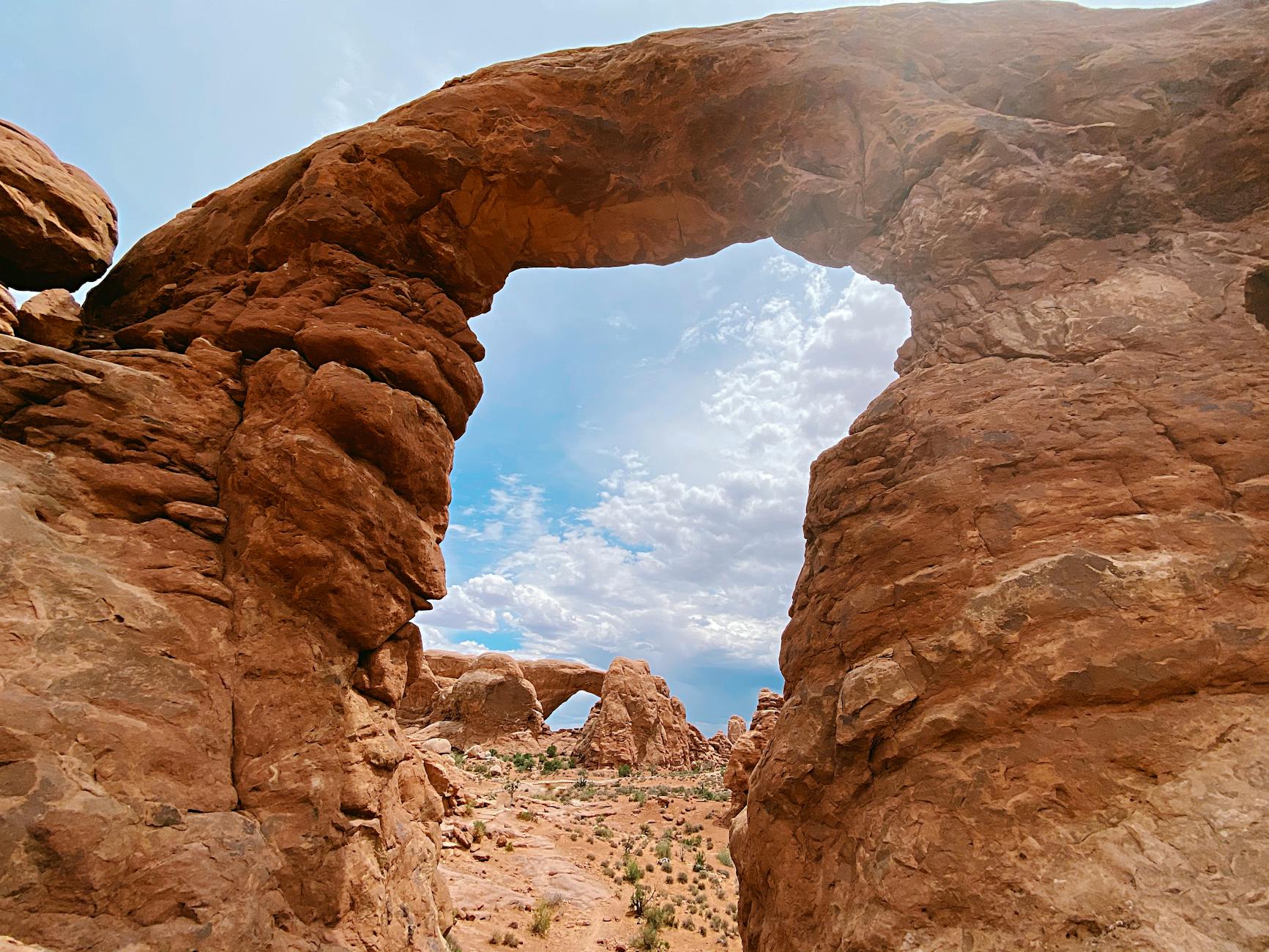The Moab Uranium Mill Tailings Remedial Action (UMTRA) Project is ahead of projections for 2017, shipping an extra 17,000 tons of uranium mill tailings for a total for the year of 467,000 tons, Acting Moab Federal Project Manager Ellen Mattlin said last month.
Project officials had planned to move 450,000 tons in 2017, but they met that goal two weeks ahead of schedule. Through October, the total amount of tailings shipped to the long-term disposal cell near Crescent Junction, about 30 miles north of Moab, is about 8,859,000 tons out of an estimated 16 million tons, according to the project’s website. At the current rate of tailings shipments, the project is expected to be completed by 2035.
The cleanup of the former Atlas Mill site along the banks of the Colorado River just north of Moab is a legacy of Cold War-era demands for uranium during the nuclear arms race with the former Soviet Union, and the dawn of the nuclear energy industry.
As of late October, the project has gone more than 400 days without a lost-time incident. In total, the project employs just over 100 workers between remedial action contractor Portage, Inc., S&K Logistics Services, LLC and the U.S. Department of Energy.
“So they’re working safely and getting the job done,” Mattlin told the Moab Tailings Project Steering Committee during its Oct. 24 meeting.
A $3 million bump to project funding during the 2016-17 fiscal year allowed the purchase of a new dozer and water wagon for the Moab site. New reach stackers, which pick up the containers of uranium mill tailings, were being delivered, and staff was scheduled to receive training in the use of the stackers.
Reach stackers have been at the site since the start of the project, and according to Mattlin, there was no place in the U.S. that had parts that could work on the equipment.
“The mechanics were getting very creative with this old equipment, so they’re pretty excited to have the new stuff come in,” she said.
No budget for the project has been passed for the 2017-2018 federal fiscal year. President Donald Trump’s administration has proposed a budget of $35.3 million.
“That’s what we expect we’ll get,” she said. “It would be nice to have the plus up again, but right now, within the Continuing Resolution, that might be the president’s request.”
Project officials are working on their priorities for the current fiscal year.
“Since we had that $3 million plus-up and we bought the equipment, we’re looking at the priorities for ’18,” Mattlin said.
The project’s technical assistance contract was awarded to incumbent S&K Logistics and took effect on Sept. 20.
A key topic at the Oct. 24 meeting was the future of cottonwood trees planted 10 to 12 years ago along U.S. Highway 191, which were planted to screen the project site from the roadway. The site is about three miles northwest of Moab near the intersection of the highway with state Route 279. The trees should be bigger for their age, and thus, are ineffective in their screening purpose, said Wildland Scapes owner Kara Dohrenwend, who was previously asked to visit the site and explore landscaping options.
“They’ve been there a long time, and for the size or the length of time they’ve been there, they’re still pretty small,” she said. “They really should be bigger and a little more robust than they are for that age tree.”
Dohrenwend said that cottonwoods like water, needing a minimum of 250 gallons per irrigation to fully saturate.
“To keep it simple and do 10 irrigations in the season, you’re looking at 2,500 gallons per tree,” she said. “If you’re looking at 200 trees, you do the math. It’s a lot of water.”
Dohrenwend also noticed that the road is slightly higher than the tree line, and the project site is below that point.
“So if a goal is to screen the site, I don’t know that that’s truly possible to do, with the road being higher … And I think after 10 years of attempting it, I don’t know if that goal is essential. It certainly is a huge investment.”
Dohrenwend said the trees will need even more water as they get older.
“So to keep them healthy, they’re going to need a massive amount of water, which is going to require irrigation … I don’t think you’re going to hit groundwater. You might near (Courthouse) Wash … A few over there are doing quite well … But the ones that go up toward the entrance – the current entrance to the site – the higher up you get, the harder (it will be) to keep them alive, so I think it’s important to understand that if the county or some other entity takes this over in the future, that’s going to be a major expense, pumping that water to water those.”
The trees are currently irrigated using river water, which raises other potential issues, such as the growth of knapweed and other weeds, Dohrenwend said.
About six of the trees have already died and will be removed from the site. Steering committee member Joette Langianese said she would like to see some of the trees saved if possible.
“Let’s just do what we need to do, but don’t do anything extraordinary at this point,” Langianese said. “The trees will die or they won’t, and what survives, great.”
Grand County Council vice chair and council UMTRA liaison Mary McGann is interested in slowly replacing the cottonwoods with trees, shrubs and vegetation that will thrive in that area, instead of requiring constant effort to maintain.
Grand County Community Development Director Zacharia Levine agreed.
“If the initial objective was visual screening, and it’s not doing a great job of that and it’s not even screening the area that it was intended to screen, really I think what we’re trying to optimize is aesthetic value, and perhaps there’s a different landscape design to provide better aesthetic value,” he said.
The goal is to have options to present before the steering committee’s January meeting, so the committee may take action before the spring, Mattlin said.
After bump in funding, Trump administration proposes reduced budget of $35.3 million





